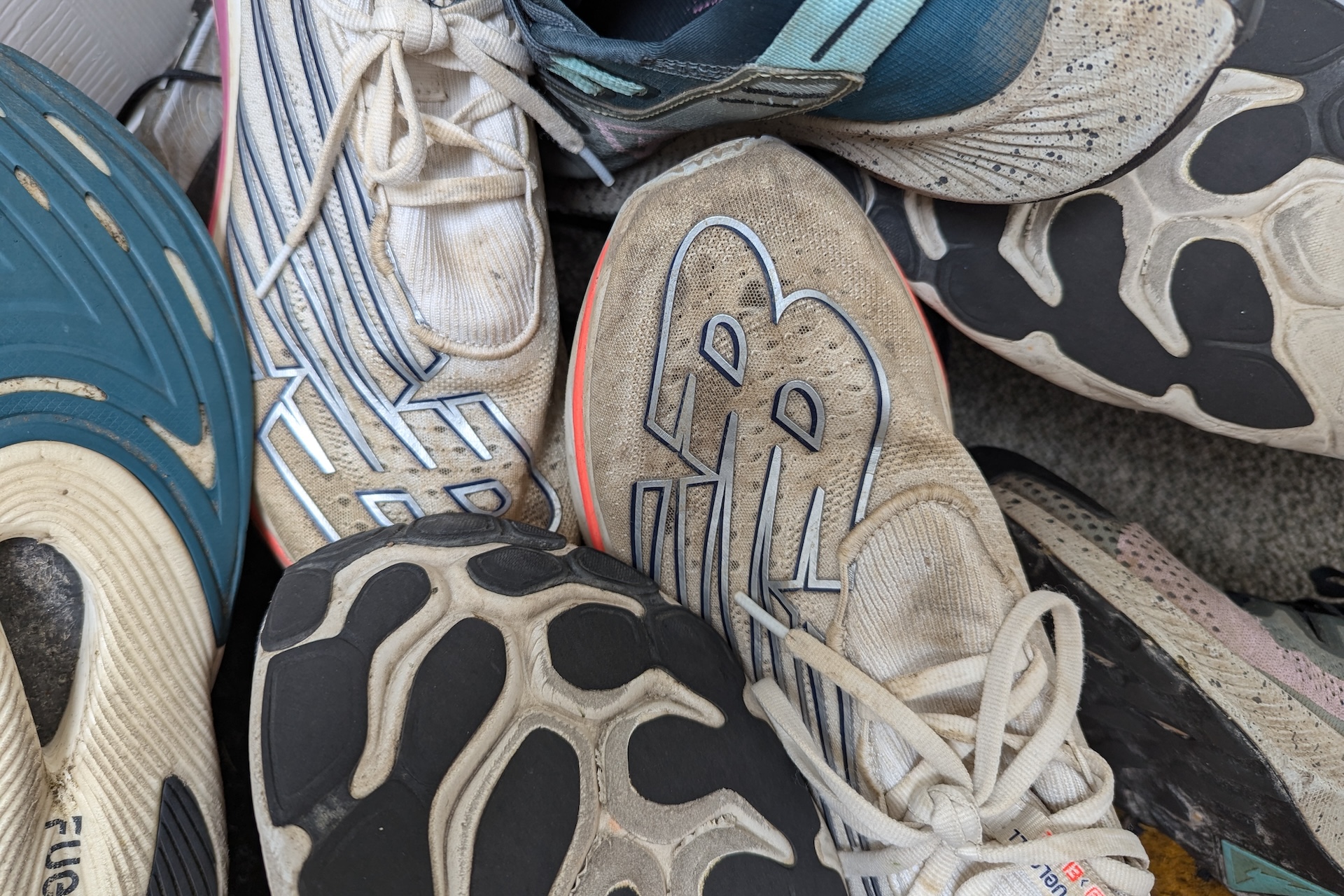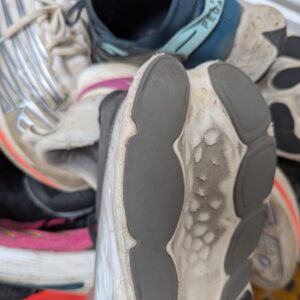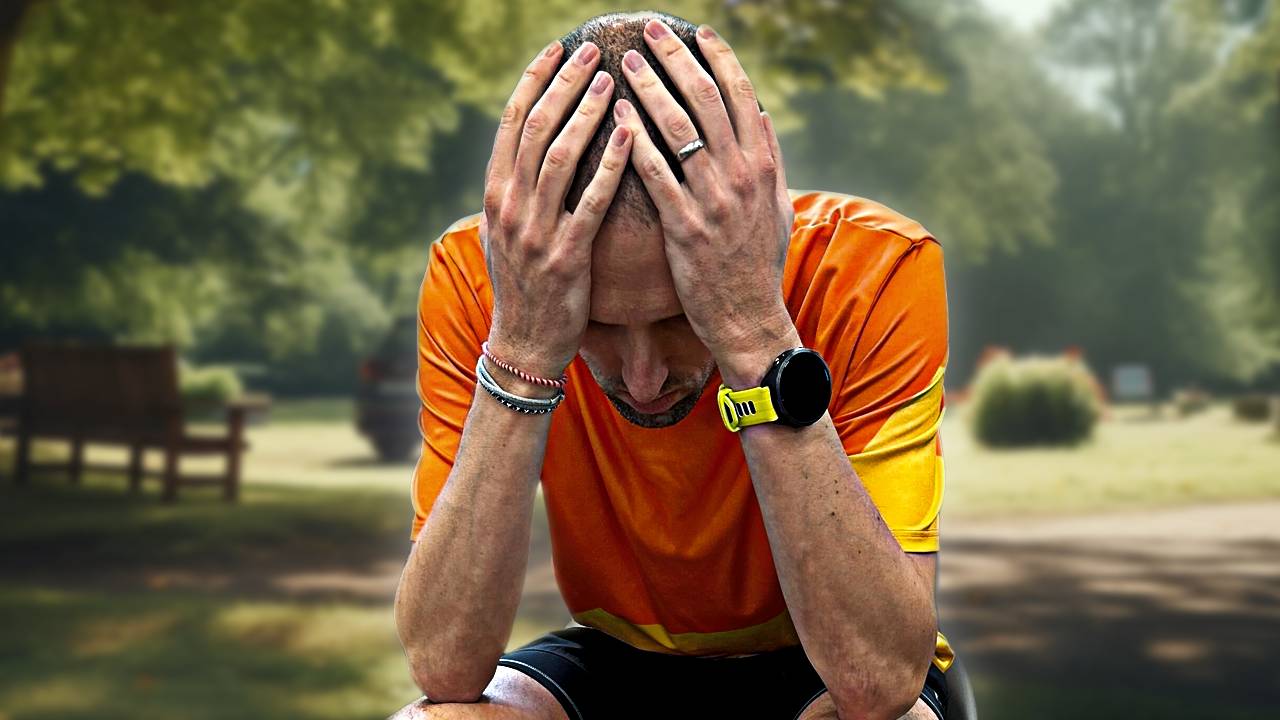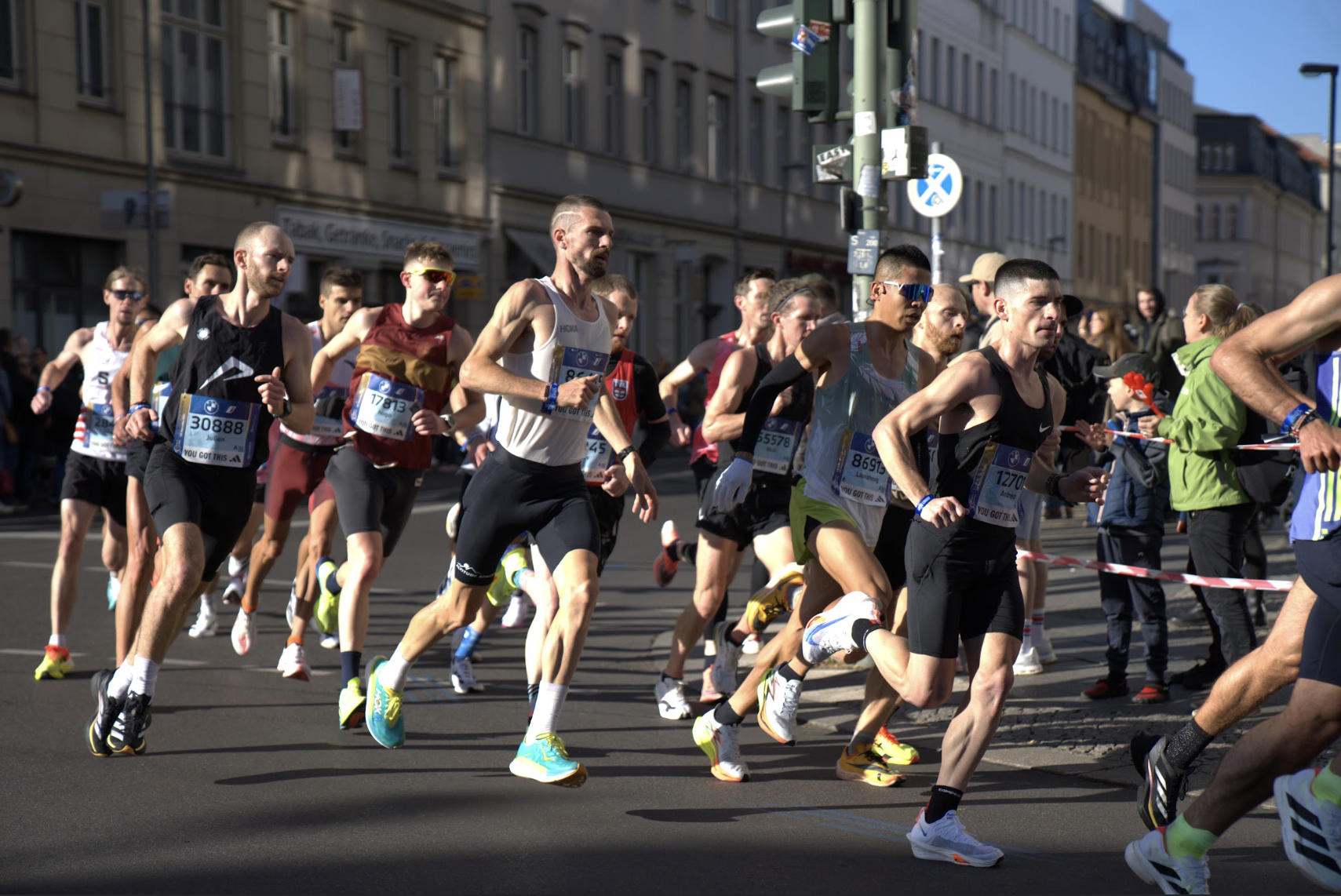When To Change Running Shoes?

How do you know when it’s time to change your running shoes? Should it be after 300 to 500 miles, or are there other signs that your shoes need replacing? And could you repair or donate your shoes?
DO YOU NEED TO CHANGE RUNNING SHOES AFTER 300-500 MILES?
This seems to be a common piece of knowledge passed around the running world, but is it true?
The answer is yes and no. Many running shoes have a natural lifespan that lasts for around 500 miles, but there are many shoes which are still great for many more miles. Rather than counting the miles you’ve run in a pair of shoes and just tossing them out when you hit a certain number, it’s much better to look for signs that your shoes are no longer performing as well as they should.
But it’s important to remember that you can run for many, many miles – a thousand or more! – in a pair of running shoes as long as they are still comfortable and supportive for you.
WHAT AFFECTS WEAR AND TEAR ON YOUR RUNNING SHOE?
Running shoes change as you wear them. When brand new, the midsole foam is nice and bouncy, the outsole has plenty of grip, the upper is taut, the heel counter is still supportive (read our Anatomy of a Running Shoe if you’re unsure what any of these are!). But the more you run in them, the more the shoes begin to wear down.
There are lots of variables which affect your running shoes over time.
If you run in wet or humid conditions then the shoes could wear down quicker than in dry conditions.
Your gait and the way your feet strike the ground will change where your shoes wear down.
Some shoes are designed to last longer than others. There are trail shoes with more durable uppers and outsoles, and these should generally last for more miles than carbon plate racing shoes which have a shorter lifespan of peak performance.
SIGNS THAT IT’S TIME TO GET NEW SHOES
The shoes tell stories about your feet.
Turn an old shoe over and look at the outsole. You’ll see areas where it’s more worn – maybe on the outside edge of the shoe, or under the ball of the foot – and this can tell you where you land when you run. The tougher outsole can wear through to the softer midsole and while the shoes can still be fine to run in, they offer less protection.
You can also take out the insole and see the impression that your foot has made in it. As this is the part of your shoe which directly touches your foot you can see when it’s wearing down. If the insole is wearing through then you can replace the insole long before you need to replace the shoes.
The upper can sometimes wear through or even tear. Sometimes these can be repaired using glue or patches of fabric – always consider trying to repair a shoe before throwing them away.
A bigger sign that it’s time to replace a pair of shoes is if they lose their responsiveness and bounce. Over time the springy midsole, which is designed to compress and bounce back, will eventually become less responsive. A sign of this might be that the shoes feel firmer or flatter than when you first got them.
An even bigger warning is if the shoes start to make your feet or legs ache. If you feel new niggles which you think is coming from the wear in the shoes then maybe consider replacing them or using them less frequently.


HOW DO YOU KNOW HOW FAR YOU’VE RUN IN YOUR SHOES?
You could make a manual log of how many miles you run in a pair, but how many of us want to do that?
One of the best ways to measure how far you’ve run in a pair is to use Strava, where you can add shoes and tag them every time you run in them, and that will add up the distance you’ve covered when running in the shoes.
But you shouldn’t just change shoes once they’ve hit a certain number and it’s better to check the way the shoes look and feel and use that as a way of deciding when it’s time to change your shoes.
HOW TO MAKE YOUR RUNNING SHOES LAST LONGER
- Have a running shoe rotation with several pairs of shoes. This could be two pairs of similar shoes which you alternate, or could be a wider range of shoes where you have a different pair for each type of run, like tempo running shoes, daily trainer running shoes and trail running shoes.
- Only use your shoes for running and not for walking, as walking will gradually wear down your shoes in the same way as running.
- When your shoes no longer feel good for running, then you can turn them into your walking shoes as this will mean they stay useful for you for longer.
- Keep your shoes clean (but don’t put them in the washing machine!). Dry them out if they get wet, and get rid of any mud or dust when they’re dirty. You can use a dry brush or something like a Boot Buddy.
- Replace your insole if it’s wearing thin.
- Unlace your shoes when you take them off instead of just pulling them off by standing on the heel counter.
- Repurpose the shoes to extend their life. Carbon plate racing shoes will typically be good for 100 miles or more of racing and then the high-performance foams may lose their optimum performance. At this point you can continue to use them as a tempo or interval shoe. Also, if you’ve got a shoe that still feels OK but isn’t as responsive as it used to be, then you could save it to use when it’s raining – we don’t need to get our nice new shoes dirty when we can just pull on an older pair!
WHAT DO YOU DO WITH OLD RUNNING SHOES?
Before you consider getting rid of a pair of old running shoes, think about the following things:
- Is there a way you can repair your shoes before thinking about getting rid of them? Could you use a patch to repair a worn upper?
- Can you ‘downgrade’ a pair of running shoes and use them for a different purpose? Can you use them for walking? Can your carbon plate racing shoes become your tempo training shoes? Can an old pair of easy running shoes be saved for rainy runs?
- Can you donate them to an organisation which helps to get them to other people, like JogOn or Preloved Sports.
- If you really need to get rid of a pair of running shoes then put them in a textile recycling bank and not just the rubbish bin.
Do you have any shoes which you’ve run many, many miles in? Do you have any top tips for when to change shoes?




























Running News
Ingebrigtsen Stars at World Athletics Indoor Championships 2025 – Plus All The Winners!
Sam Ruthe Is First 15-Year-Old To Run A Four-Minute Mile!
Eliud Kipchoge Will Run The 2025 Sydney Marathon!